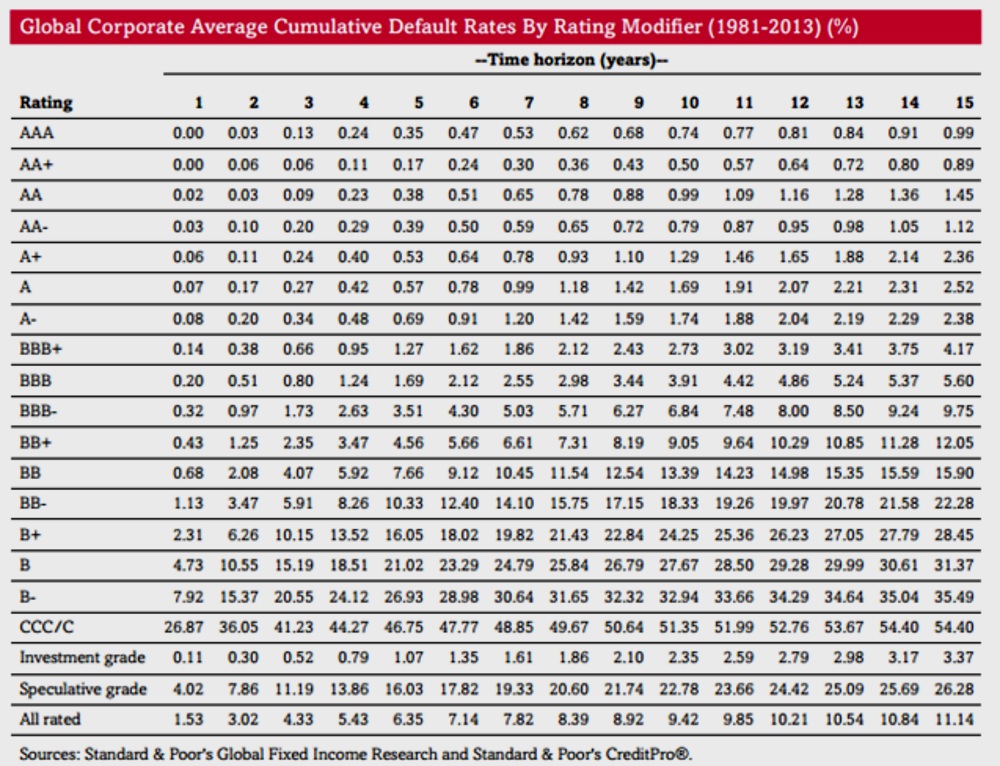There is a very wide range of foreign currency bonds available. Yield to maturity in USD bonds range from -0.55% to over 18%. This article considers the risks and well as the probabilities of default for USD bonds using the S&P historic global default table
Last week we listed the “Top 10 bond risks that you need to know”. This week, we dig down further and assess the risk of default given the credit rating for a range of USD denominated foreign currency bonds.
All of the 10 key risks we listed last week still pertain to foreign currency bonds. But as the name suggests, investors in these bonds also take on foreign currency risk, especially if they need to buy foreign currency to purchase the bonds and then exchange interest income during the term and capital at maturity, back into Australian dollars.
I met a potential new client in Adelaide last week, who had a business in the US and existing USD bank accounts earning very little in the way of interest income. He was a perfect candidate for foreign currency bonds. The risk of changes in the value of the currency would not affect his risk profile as he has an ongoing need for USD. He’d be buying USD denominated bonds for the higher return he could earn for a slight increase in risk and a better return than bank deposits.
FIIG has, over the last six months, suggested wholesale investors consider adding USD bonds to their portfolio as a way to take advantage of an appreciating USD against the Australian dollar. This has for many clients been a rewarding strategy.
However, those that opted to invest in some of the higher risk bonds may have seen an increase in the underlying credit risk of the bond outweigh the currency movements.
It’s a case of determining the level of capital risk you want to take, how reliant you are on the income and which of these is most important.
The table below illustrates a range of USD denominated bonds available and minimum investment amounts. I purposely listed the bonds according to their credit rating, with the highest rated bonds at the top moving down to the lowest rated bonds.
Practically all the bonds listed in the table are fixed rate and thus are exposed to duration risk. The exception is the HSBC Finance bond which is floating rate.
The first four bonds are all highly rated and due for maturity in the next 18 months. Three bonds are trading at a negative trading margin (compared to bank swap rates), while the other is at 0.00%. The HSBC and GE Capital Corporation bonds are both trading at negative yields to maturity.
Investors wanting to capture any future USD appreciation but minimise credit risk would look to invest in these bonds. The Telstra and Vodafone bonds, also rated in the “A” range would also be good additions if this was your strategy. Note though, that the Telstra bond is for a six year term with a yield to maturity of 2.20% and the Vodafone, at one notch lower and a year longer pays circa 0.50% more.

Table 1
There are six bonds that are rated in the “BBB” range, four in the “BB” range and two in the single “B” range. Risk really starts to increase when bonds are rated sub investment grade (BB+ and lower) and to give you an example we use the S&P Global Corporate Average Default Rates shown in Table 2.
If we consider the CBS Corporation BBB rated bond that matures in nine years in 2024 (so BBB rating line, nine year term) then there is a 3.44% chance CBS would default on the bond in the next nine years. Default means failure to pay interest or principal when it’s due, it doesn’t automatically mean loss.
A default may mean the company goes into wind-up. Assets are sold and proceeds applied to investors given the capital structure. Investors can still recoup capital in a wind-up situation.
Realistically, a poor performing company usually would be downgraded multiple times before default and analysts and investors would be sent warning signals, although there are instances where rated companies default without warning such as in cases of fraud.
If you consider the Barclays Bank and the Fortescue bonds, both rated “BB” but over differing terms, the Barclays bond, rounding up to two years to run has a chance of default of 2.08%, but this jumps to 7.66% for Fortescue, again rounding up to five years. The difference in yield to maturity between the two bonds is significant; 1.77% for Barclays and 10.56% for Fortescue. The question you need to ask yourself is, “Does the yield compensate for the risk involved?”
Assessing the two single “B” bonds, with the Virgin bond being a notch lower than Emeco and eight months longer dated, rounding up for term to maturity, the Emeco risk of default is 18.51% and Virgin is 26.93%. Yet the Emeco bond has a yield to maturity of 18.16% more than double that of Virgin at 7.02%.

Table 2
Clearly anomalies exist in the table.
Credit ratings give an indication of the risk involved, but the credit rating agencies can get it wrong, just as markets can over-react to negative news. Anomalies can provide opportunities. It pays to do as much research you can on the companies that you’re interested in and the industries they operate, to make an informed risk and return decision.
Note: Foreign currency bonds are available to wholesale investors only. For more information please contact your FIIG Representative.